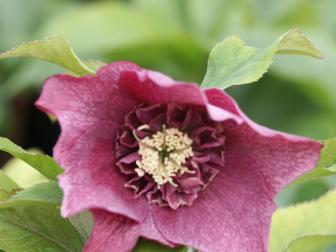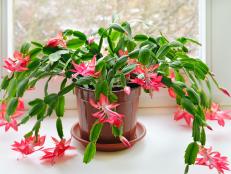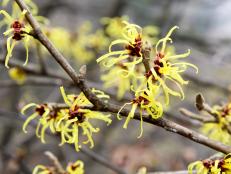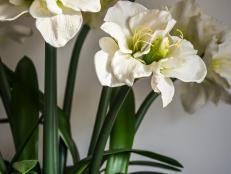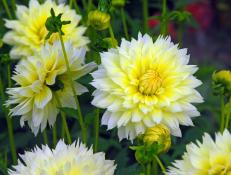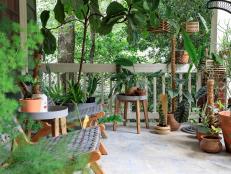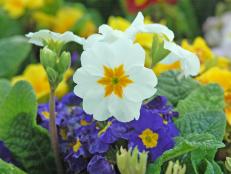Growing and Caring for Hellebores
The gorgeous Lenten rose, or hellebore, is a winter bloomer that delights in even the coldest temperatures.

Image courtesy of Burpee
If you plant hellebore seeds, sow them in the fall. They need a period of moist, chilly weather for 60 days to sprout, which they'll do naturally if you live where the winters are cold.

For gardeners in cold-weather regions, the flowerbed can look dreary by December. That makes hellebores, also known as Lenten roses, a welcome sight when they bloom from late winter to very early spring. These perennials provide subtle color until the earth warms up again.
Hellebores, in the Helleborus genus, are easy-to-grow members of the buttercup family. Although they're sometimes called Christmas, winter or Lenten roses, they're not true roses. Of some 20 hellebore plant species, only a few are typically available for sale.
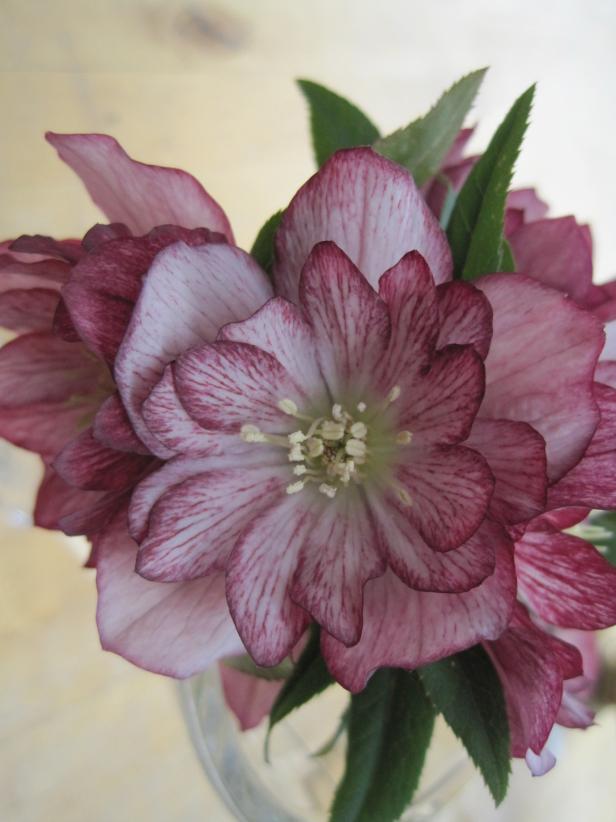
Image courtesy of Burpee
Hellebore 'Stained Glass' is a fully doubled hellebore that turns deep purple-rose to blush as the blooms age. It grows to 18 inches high and spreads to 24 inches across.
The botanical name for the Lenten rose species is Hellebore orientalis. For the Christmas rose or black hellebore, the Latin name is Helleborus niger. We'll use the common names "hellebore" and "Lenten rose" interchangeably here.
You can recognize most hellebores by their saucer-shaped flowers, which can be pink, yellow, white, cream, green, maroon, purple, spotted, speckled or near-black. There are single and fully double forms with ruffled or smooth petals. Some have colorful veins and margins.
Planting Hellebores
Lenten rose flowers can last for six to eight weeks, and the plants can re-bloom for years. If you're planting hellebores from containers, gently remove them from their pots and loosen their roots. Don't re-plant too deeply. Bury the crowns just slightly below the soil.
Keep children, pets, livestock and other animals away from Lenten roses. All parts of the plants are toxic. Deer and rabbits don't usually bother them because they're said to taste bitter and some hellebore plants smell bad.
How to Grow Hellebores
Lenten roses need moist soil that drains easily and dappled shade to partial sun. Try them in woodlands, shady borders or under deciduous trees that allow them to get some winter sun. In general, hellebores tolerate a wide range of soils.
Hellebore seeds sown in containers usually take two or three years to flower. Hellebore plants eventually spread; clumps can be divided after the spring blooms fade.
If you're going to view your flowers from a distance, try light-colored varieties that will show up in the shade or against a background of greenery. Save the darker-colored ones for planting nearby.
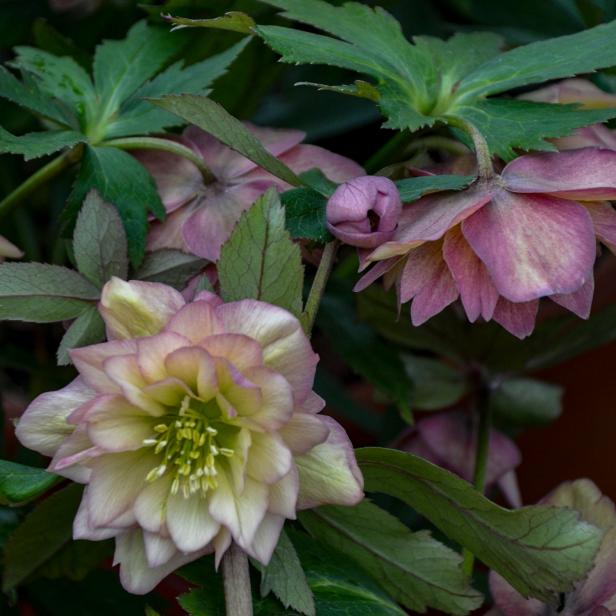
ProvenWinners.com
"Mother of the Bride' hellebores have large root systems and naturalize easily in moist, shady areas.
Caring for Hellebores
Mature Lenten roses are hardy in USDA Zones 4 to 10. If they're grown in soil amended with good organic matter, they don't usually need commercial fertilizers. However if your soil isn't rich, you can apply a balanced, slow-release fertilizer when new leaves emerge in late winter.
When the weather is dry, water established hellebore plants enough to keep them evenly moist. About an inch of water or rain per week is fine. Mulch them with shredded leaves, bark chips or other organic matter. Potted Lenten roses may need extra water while they're actively growing in fall and spring.
If you live in a hot, sunny climate, give your hellebores some shade to keep the leaves from scorching.
Hellebores have what some gardeners call "shy" or nodding blooms. That is, Lenten roses hang their heads, so you can't see directly into them. For a better view, try planting them on higher ground, such as a slope or bank. To make the blooms more visible, some gardeners remove the old leaves from stemless types. If you try this, wait until the flower buds appear before cutting off the leaves. This will also help bees and other pollinators reach the blooms more easily. Pollinated flowers will self-sow.
Hellebore Varieties to Grow
Although it may take a few years, seeds from hybrid hellebores will eventually produce murky-colored flowers. This is because the plants revert to one of the parent forms used to create them. You can simply enjoy whatever you get, or pull up your Lenten roses and replace them. Try growing seeds or plants of these varieties for beautiful winter color:
- Helleborus 'Stained Glass' – A fully doubled hellebore that turns deep purple-rose to blush as the blooms age. It grows to 18 inches high and spreads to 24 inches.
- Helleborus 'Ivory Prince' - Late winter flowers start out as burgundy-pink buds and open to reveal upward-facing, ivory petals with hints of green. Reaches 24 inches in height and spread.
- Helleborus 'Snowbells' - Recommended for Zones 4 to 9, 'Snowbells' blooms up to a month earlier than other hellebores. Its semi-double, white flowers face sideways.
- Helleborus 'Ice N' Roses' – Ruby red flowers face outward on plants that grow 15 to 18 inches in Zones 5 to 9.
- Helleborus niger 'Praecox' - This so-called "black hellebore" actually has white flowers and grows 9 to 12 inches tall in Zones 5 to 9.
- Helleborus 'Amber Gem' – These very large, double flowers are ruffled in soft yellow and red. Plants grow to 15 inches tall in Zones 5 to 8.
- Helleborus foetidus - This hellebore species, also called "stinking hellebore," grows to 24 inches tall in Zones 5 to 9. Most gardeners say the bruised flowers and leaves of Helleborus foetidus have an unpleasant odor.
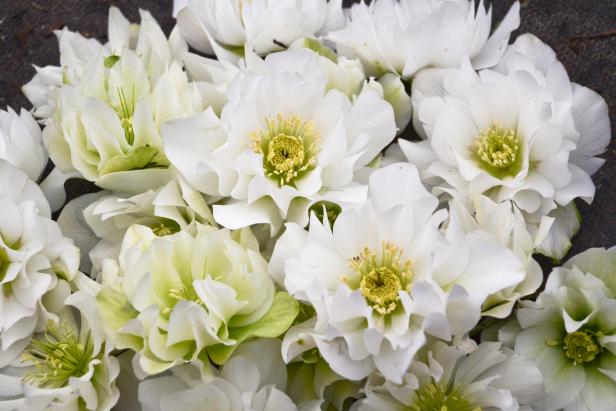
ProvenWinners.com
This hellebore, 'Wedding Bells,' blooms heavily from late winter into mid-spring.
The following Lenten roses from the Wedding Party series reach 18 to 24 inches tall and wide and are recommended for Zones 4 to 9. They have double blooms.
- Helleborus 'Mother of the Bride' - Apricot blooms with pale pink edges grow to 3 inches across.
- Helleborus 'Wedding Bells' – These vigorous, pure white flowers, surrounded by evergreen leaves, brighten shady spots.
- Helleborus 'True Love' - Wine-red blooms with darker edges have bright yellow centers.
- Helleborus 'Dark and Handsome' – This Lenten rose has lime green centers and black-purple blooms.
The following Lenten roses, from the Honeymoon series, are also recommended for Zones 4 to 9 and grow 18 to 24 inches tall and wide. They have single blooms.
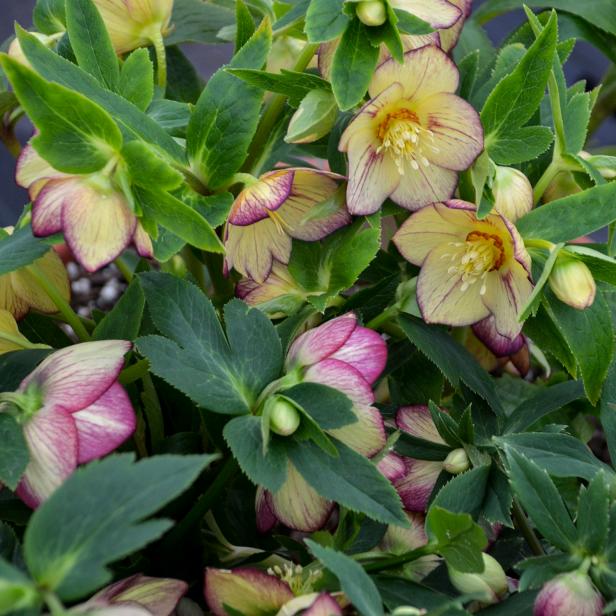
ProvenWinners.com
'Tropical Sunset' opens single, creamy yellow blooms marked with burgundy veins and margins,
- Helleborus 'Sandy Shores' – Single, pale apricot blooms have rose-pink backs.
- Helleborus 'French Kiss' – White flowers are marked with deep pink veins.
- Helleborus 'Tropical Sunset' - Burgundy veins and margins highlight these creamy yellow flowers.
- Helleborus 'Rome in Red '– Rich burgundy to maroon flowers have yellow-gold centers and creamy white stamens.

ProvenWinners.com
Sometimes called Lenten rose, hellebore 'Sandy Shores' has the soft pink and yellow colors of a sunset at the beach.
Pests and Other Problems
Undemanding hellebores are seldom bothered by pests or diseases. If aphids show up, sucking sap from the foliage and causing withering, try an organic control first. If the pests persist, there are systemic insecticides you can use, but be careful not to apply them to open flowers. You don't want to harm visiting bees.
Hellebore Varieties 12 Photos
Brighten your garden with hellebores, also called Lenten roses. These shade-loving beauties resist deer and come back reliably for years.
Leaf spot, sometimes called black spot, is a common hellebore problem caused by a fungus. It spreads in damp conditions and is characterized by large, dark brown or black spots on both sides of the leaves. It's treated by removing and destroying all affected foliage. Some gardeners try spraying with a copper fungicide as directed by the manufacturer, although some experts say the problem is incurable. However, hellebores with tough, leathery leaves may survive even if they're infected.
Companion Plants for Hellebores
Make sure the plants you use alongside your hellebores need the same growing conditions: moisture and shade. While some of the companions listed below bloom after hellebore flowers are finished, their leaves provide contrast, texture and additional seasonal interest.
- Hostas – Their big, smooth leaves contrast nicely with toothy-edged Lenten roses.
- Japanese Pieris – This broad-leafed evergreen shrub has an upright growth habit that helps set off hellebore blooms.
- Wood anemones (Anemone nemorosa) – These plants with deep green leaves and white blossoms naturalize easily in shady spots where hellebores grow.
- Corydalis – A woodland perennial, Corydalis produces mounds of ferny, medium green foliage.
- Dicentras – Also called bleeding heart, this plant has ferny, gray-green foliage.
- Lady's Mantle (Alchemilla) – Alchemilla's mounds of scalloped leaves range in color from olive green to light green.
- Lungwort (Plumonaria) - Despite its uninviting name, lungwort's leaves add interest to winter plantings. Selections with silvery-white markings or splashes of color are especially eye-catching.
- Foamflower (Tiarella) – White or pink flowers are backed by clumps of lobed, evergreen leaves. Easy to grow, this plant tolerates the damp conditions hellebores prefer.
Also try pairing Lenten roses with early flowering woodland iris, primroses, rhododendrons and astilbe.






